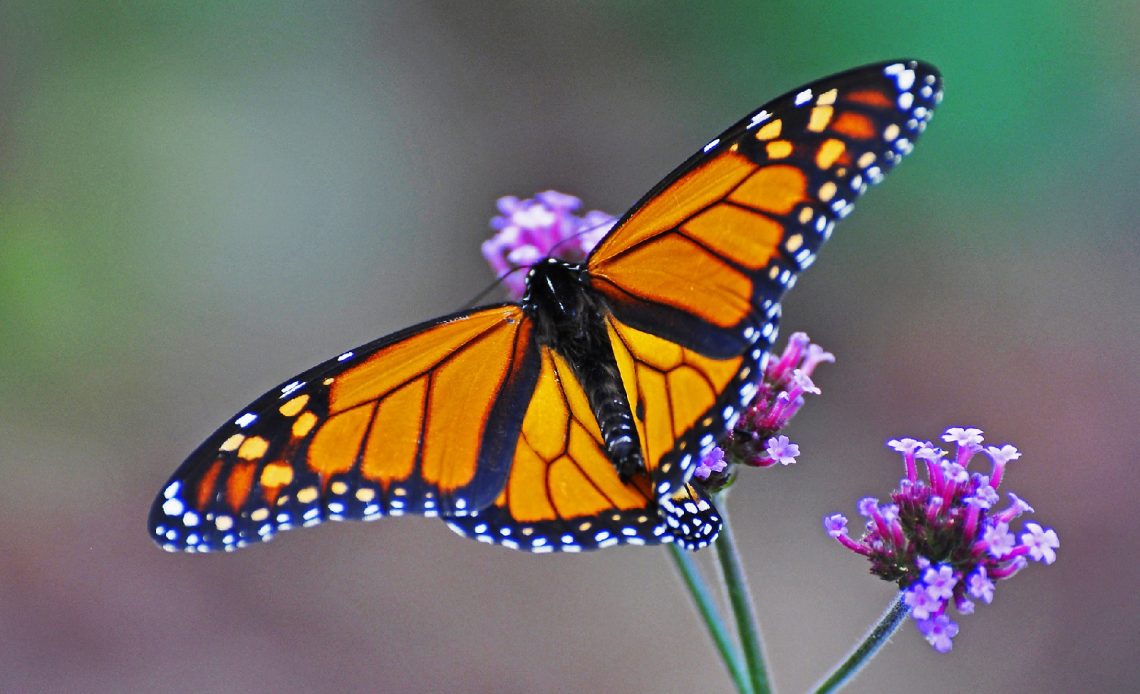

We’re here to help! Wild Yards is a completely free website that is 100% dedicated to helping you create a wildlife-friendly, sustainable yard. Read more
WildYards is reader-supported. When you buy a product through a link on our site, we may earn a comission. Every product is independently selected by our (obsessive) editors and our reviews are unbiased and objective. Read more about our mission or our privacy policy.
We often see butterflies flying about in the warmer seasons, visiting flowers, and basking in the sun. However, very few of us ever get to see how these butterflies survive up close. What do butterflies eat from day to day?
Butterflies typically thrive on a diet of nectar and water. They’ll also happily feed on sugar water, honey water, tree sap, mud, and even animal matter. Generally, sugar makes up a large part of their diet, and most species are designated as herbivores. Certain species may even have specific feeding habits unique to their hunting behaviors and habitats.
What goes into a butterfly’s diet?
The adult butterfly is most likely to feed on nectar, finding this sweet treat in a variety of herbs, vegetables, and blossoms. You’ll most often see butterflies feeding on flowers they can easily rest on and drink from.
What’s interesting about the butterfly – and which is something of a popular misconception – is that they can’t thrive on nectar alone. For example, some butterflies will need to top up on certain minerals they can only find in natural matter. As butterflies only have limited equipment to eat with a proboscis, which works somewhat like a straw, their diet largely comprises of liquid or liquified foods.
In fact, while butterflies are famous for hunting down the sugary liquid from flowers and plants in your garden, they also have a thirst for salt – which they can find in soil, mud, and even in our sweat. Ever wondered why a butterfly flutters towards you? There’s a chance they can smell your sweat in hot weather, and are keen to have a taste!
Let’s run down the main components of the average butterfly’s daily diet.
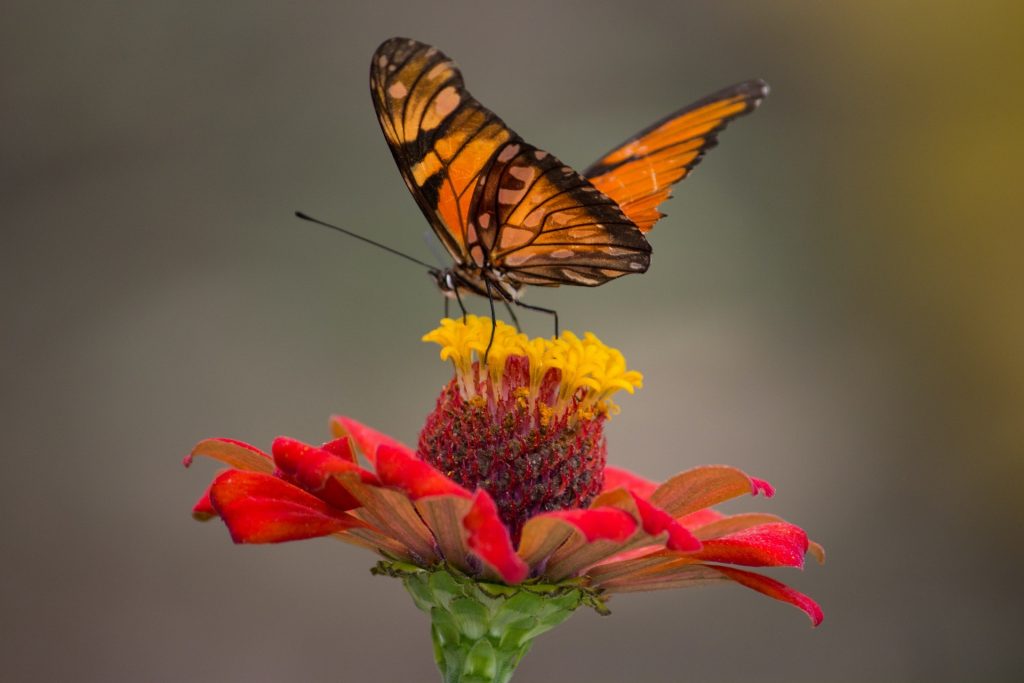
Nectar
The one dietary choice that links all butterflies together is nectar. Nectar is pure sugar – and much in the same vein as hummingbirds, butterflies feed on raw sucrose and other naturally occurring sugars for the enormous energy boost that arrives alongside.
Butterflies easily find nectar in fertile plants and flowers – which, interestingly, have evolved to appear more attractive to pollinators.
It’s a misconception that butterflies will head for any flower in your garden – for example, they are not attracted to slightly closed flowers. If flowers aren’t open, it is difficult for butterflies to access the nectar within. Flowers such as gardenias and double-flowered dahlias, for example, tend to be a bit of a turn-off for these colorful flappers.
Butterflies look for brightly colored flowers. They are particularly attracted to reds, oranges, pinks, and yellows. Flowers such as zinnias, gladioli, azaleas, pansies, geraniums, and sunflowers are all ideal feeding spots – they have flat, open faces, and composite petals, meaning they plume out.
Unlike pollinators such as bees and hummingbirds, butterflies cannot eat mid-flight. They have to be able to rest upon something as they eat. That’s why they search for flowers with petals that are both wide and strong enough for them to rest upon.
Butterflies will also search for large stores of nectar where they can host or lay eggs. These plants are known as ‘host plants’, and are rich enough in nectar to raise larvae. The sunflower, for example, is a common host plant thanks to its ever-present nectar in thousands of tiny buds.
What’s especially interesting about butterflies’ nectar-feeding habits is that they’ll head to herbs and vegetables, too. Again, it’s thanks to such plants evolving to appear more appealing to pollinators. For example, asparagus, radish, and pumpkin patches are always likely to appeal to butterflies. The swallowtail butterfly, in fact, is a big fan of herbs such as dill, oregano, and fennel.
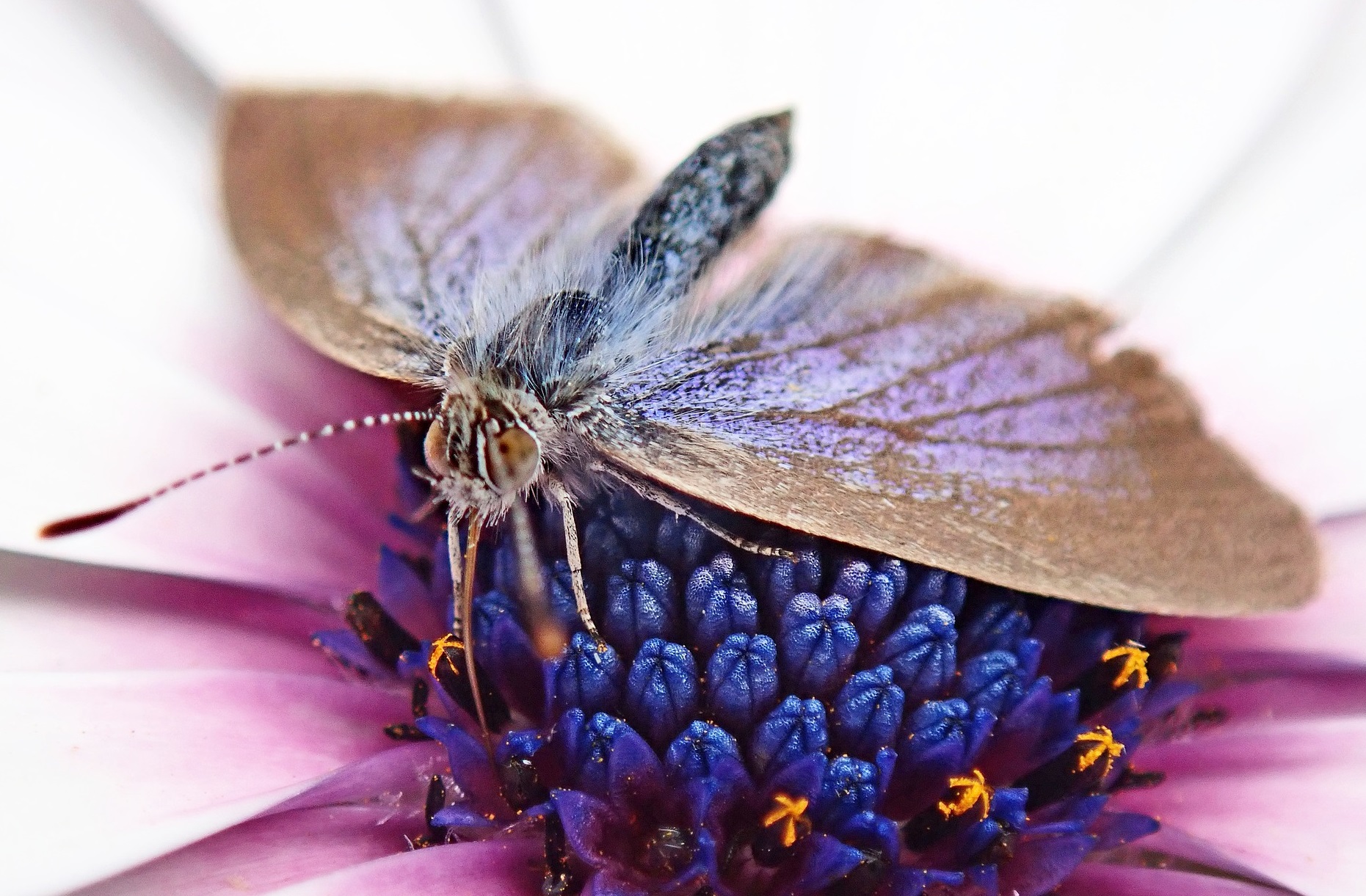
Fruit
Butterflies love anything sweet, meaning anything containing fruit – from the raw growth to juice left in a feeder – is likely to capture their attention. As their proboscises restrict them to drinking (rather than chewing), they prefer very soft, sweet fruit that can supplement the energy they get from nectar.
Butterflies drink from fruit as a natural source of water – choosing oranges, apples, melons, strawberries, and melons. They’ll also choose bananas and pears, which can be a little tougher to consume – purely for the sugar.
Butterflies prefer extremely ripe and softened fruit that is easier to feed on – meaning it’s a good idea to leave out fruit that’s going bad in the morning, disposing of it by the evening to deter vermin. If you want to treat butterflies to fruit on a feeder, make sure you change out the fruit once a day, and that you have a small moat of water to help prevent ants from stealing the supply!
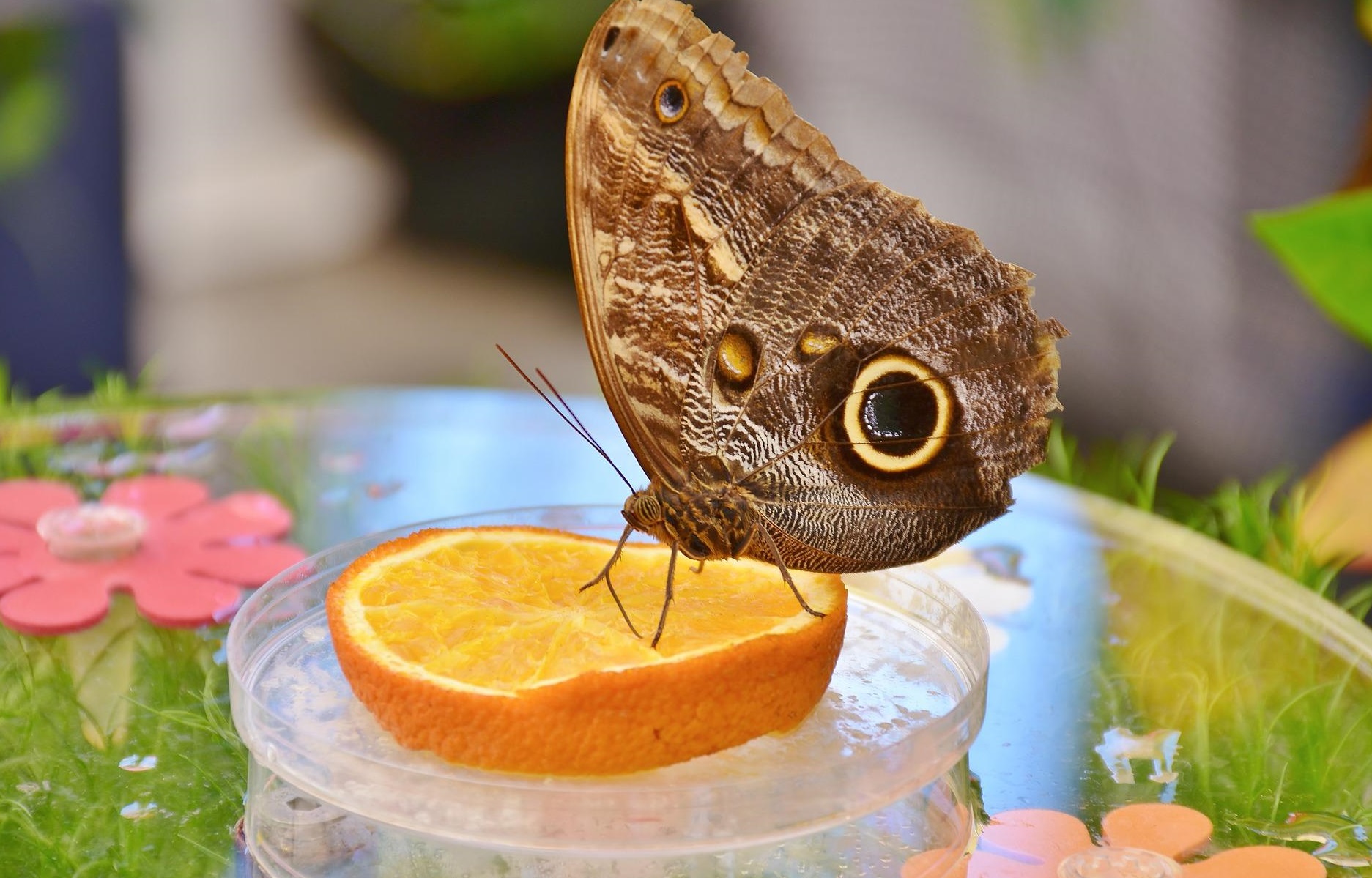
Pollen
Pollen is, by and large, spread as a by-product of pollinators feeding on nectar-rich plants, Interestingly, there is one such species – the zebra longwing butterfly – that will happily eat pollen before it scatters.
Zebra longwings are one of few butterflies that can break down and digest pollen – which is great news, as it’s actually a source of protein they otherwise wouldn’t find in nectar alone.
Oddly enough, these butterflies even use pollen to avenge their deaths. If a predator eats them, the pollen that they have consumed will release cyanide in their bodies, eventually killing any predator that dares consume them.
Interestingly, it’s thought that Heliconius butterflies, the family to which zebra longwings belong, are unique in the adaptation to eat pollen!
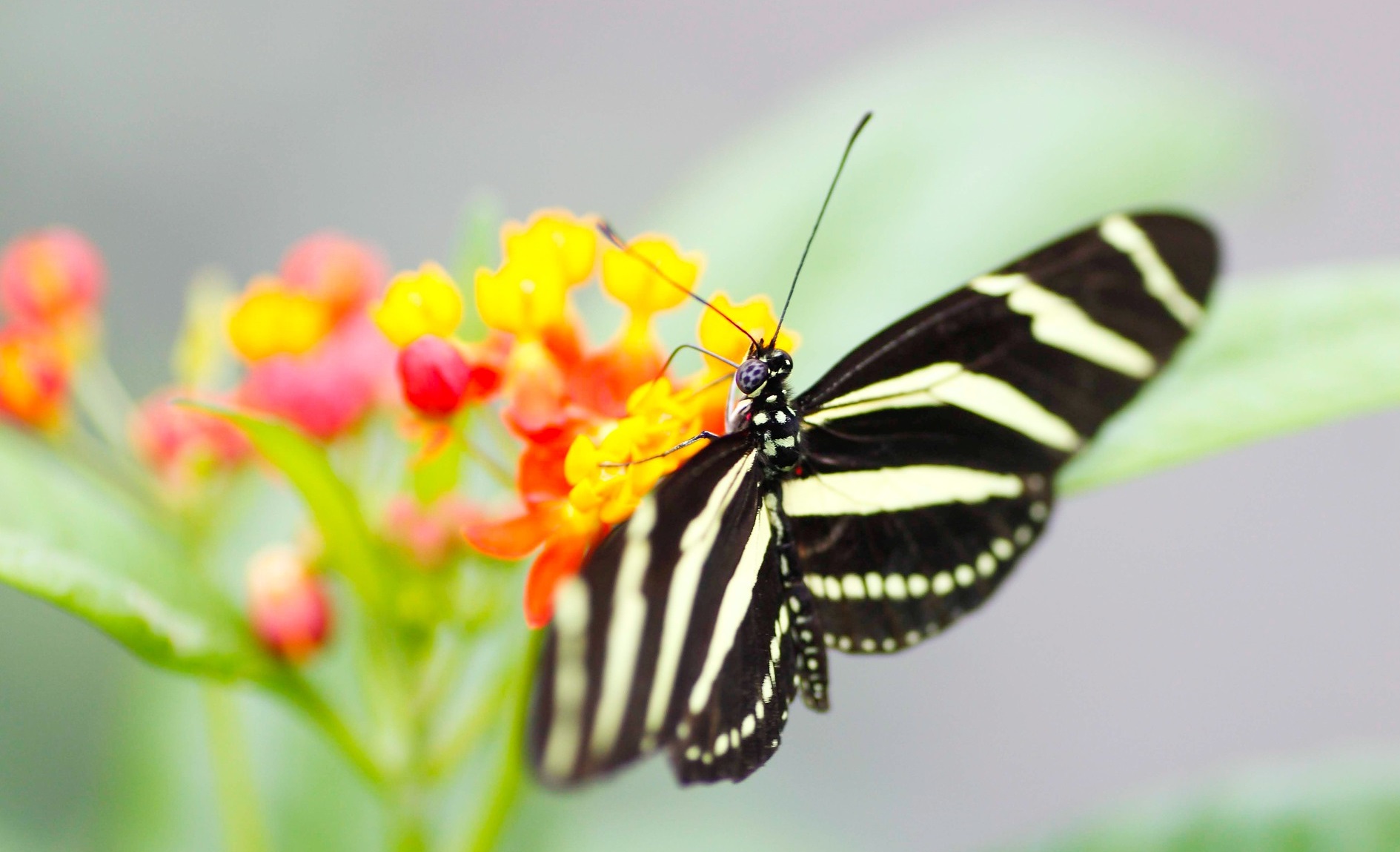
Sugar water
Sugar water is a fantastic substitute for butterflies looking for nectar, and is a popular choice for wild yard owners looking to give something back to visiting pollinators.
Simply mixing a little sugar in water and putting it in a butterfly feeder will attract most local species – again, making sure to prevent ants from taking a closer look and stealing the whole supply.
Mud
As strange as it may seem, butterflies will happily lap up mud after the rain’s passed – particularly males, who rely on this organic resource to top up on various minerals and high levels of sodium.
They feed in this way to help support the breeding season – as the spermatophore traveling from male to female will help to increase the pair’s chance of breeding healthy eggs, and passing down their traits. Butterflies will also lose considerable sodium while mating, meaning they will need to top up.
Mud is surprisingly full of nutrients. A blend of water with ground salt provides essential protein, nitrogen, and amino acids to most butterflies. You may find some butterflies congregating around puddles in the ground after bad weather has passed – this is called mud puddling, and it’s perfectly healthy behavior.
Another reason why butterflies feed on mud is simply that they lack sodium in many of their other food sources. Herbivores will usually need to seek sodium from mud and dirt – even feces. Butterflies will also happily drink sweat, as mentioned, to top up on sodium.
Sap
It’s a common sight to see woodpeckers enjoying sap from trees, but the incredible sugar content – along with amino acids and sodium – is highly useful to the average butterfly.
Butterflies that flock to trees for their sap include the red admiral, the huckleberry, and the mourning cloak. All three of these butterflies have high tolerances for sugar, meaning they will generally feast on any sweet treat they can find.
You may not see butterflies feeding on tree sap very often, as they have to rely on other animals to break the thick bark of a tree before they can access the sweet goodness within. It’s why it makes sense to attract woodpeckers, as well as butterflies, to your yard.
Butterflies seem particularly attracted to oaks, willows, walnuts, and ashes – many of which will attract squirrels and woodpeckers, making for an even wilder yard.
Insects
Butterflies are herbivorous barring one particular species – the relatively fearsome harvester butterfly, which feeds on wooly aphids, packed full of honeydew secretions. Harvesters are sadly fairly rare in terms of a species you’ll spot in the wild, meaning you likely won’t spot a butterfly munching away on insect protein any time soon.
Like the zebra longwing, the harvester has evolved uniquely in this fashion thanks to its wooded habitat.
Fungi and Mushrooms
Not all butterflies like eating fungi, with the harvester, again, proving a useful example that boosts the trend – but many will choose to feed on these growths purely for a boost of salt and other minerals. Some research also suggests that they may even use mushrooms for medicinal purposes, rather in the same way humans take antibiotics.
You will unlikely find many fungi-loving butterflies in the US, as these species tend to thrive in extremely hot, humid areas south of the border. Butterflies you’ll find sucking on mushrooms include the monarch, the gossamer-winged, and the blue morpho.
The blue morpho, in fact, is famous for being one of the least picky of all butterflies – it’ll happily feed on various sources of nectar, salt, and other nutrients, including the below.
Organic Matter and Produce
Weirdly enough, thanks to their mud puddling habits, many butterflies will feed on a variety of organic matter to top up on salt. This means they will happily drink from animal excrement, rotting food, dying plants, and even the blood of an animal carcass! Crucially, butterflies look for moist areas where they can find sodium to complement their largely plant-based diets elsewhere.
Intriguingly, butterflies will even drink from their own urine if they are particularly desperate for a salty feed! There are even some butterflies that exhibit vampiric behavior – those in the calyptra family, for example, actively seek out blood to drink!
How do butterflies eat?
Butterflies have very long tongues known as proboscises – these act almost like straws that they use to lap up their food. Their proboscises can unfold and stretch to reach deep into a flower for nectar when they need to.
Some butterflies have amazingly long proboscises – the eurybia lycisca, for example, has a tongue that’s double the length of its entire body!
Butterflies can’t chew or digest solid food – meaning they rely on their proboscises to drink up liquid nutrients. This is markedly different from their behavior as infants, as they will happily munch on solids in caterpillar states.
Once the butterfly has finished feeding, its proboscis curls up, ready to propel out once again when they find a food source of interest.
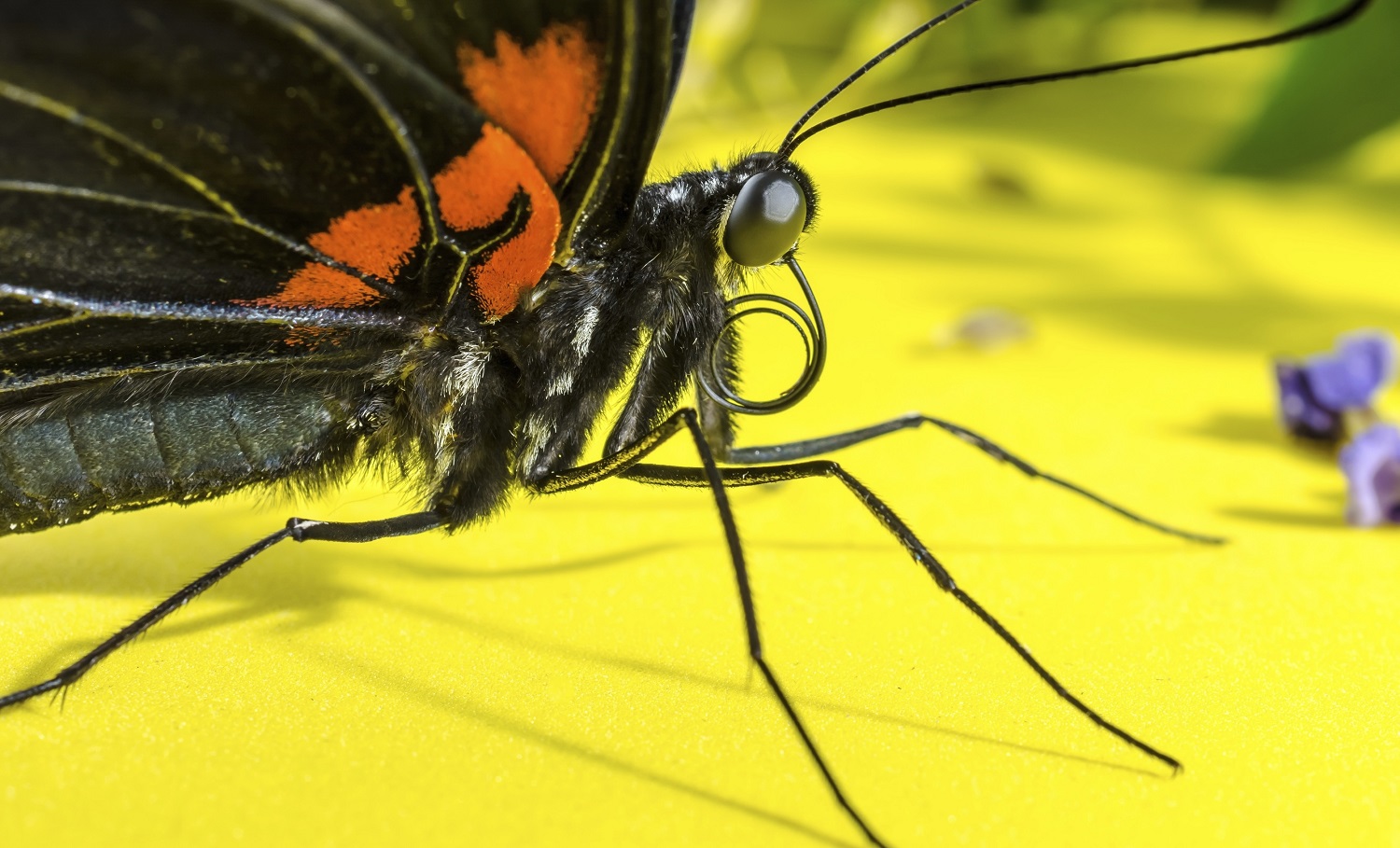
How much do butterflies eat?
Most butterflies eat multiple times a day – there’s no precise data to suggest exactly how often! Usually, most of their day is spent searching for nectar and sugary treats – though some species can go days without eating if they have to. It’s thought that some species will even forget to eat, distracted by hunting for mates.
Interestingly, monarch butterflies can go from three to five months without eating. This usually happens during their migration period from the US to South America. When they enter a ‘diapause’ state, many butterflies also choose not to eat over the winter to help survive during hibernation. They’ll usually feed up in the fall and burn off the energy.
Butterflies and moths are very similar with regard to feeding habits – and, strangely enough, there is a moth species that doesn’t eat or drink at all! The Hercules moth is an oddity in that it survives on food it ate as a caterpillar, stored up for adult consumption – it doesn’t have a mouth!
Butterflies tend to be opportunistic feeders, too. They have taste buds on their feet – which means when they land on something organic, they will usually be able to tell whether or not they’d like to eat it!
Do butterflies drink?
Perhaps unsurprisingly, water is crucial to a butterfly’s health, and they get most of their hydration from the fruit they drink and nectar they find in plants. They will also drink fresh water if conditions are especially hot.
Since they cannot land on water, it is very difficult for them to be able to drink from fountains, birdbaths, ponds, and other common forms of water that we have in our gardens. This is why many people choose to create platforms for them for ease of drinking.
You can easily create a butterfly watering hole by lining a shallow dish with some stones and pouring water over them. That way, the butterflies have plenty of water and landing spaces.
How do I provide food for butterflies?
The best way to provide food for butterflies is to ensure you grow an array of colorful, nectar-rich flowers with flat, open faces – focusing on warm colors such as reds, yellows, and oranges.
Do also leave water dishes with platforms for butterflies to drink from – alongside an occasional supply of soft and/or rotting fruit. The richer your food supply, the more butterflies you’ll attract – alongside other helpful pollinators!
